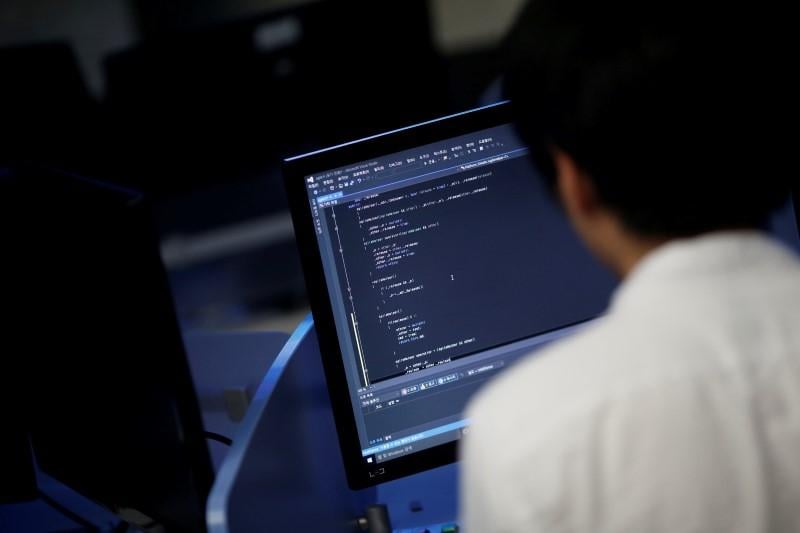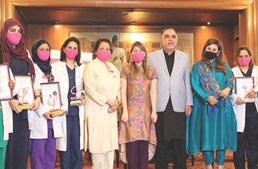KARACHI: The information, communication, and technology (ICT) sector is often praised as the one that drives export growth in the service sector. In the first eight months of FY24, the ICT sector exported $2 billion worth of goods. This is about 15% more than what it exported in the same time period the previous year.

In FY23 and FY22, the ICT business was said to have exported $2.6 billion worth of goods. That is, if things keep going the way they are this fiscal year, exports could reach $3 billion. After the textile industry, this makes it the second most important source of exports. But because IT is such a technology-heavy field, it’s possible that IT companies depend a lot on goods that are brought in from other countries. This makes it even more important to make IT products easy to get.
The Information Technology and Innovation Fund recently released a study called “How Expanding the Information Technology Agreement to a ‘ITA-3′ Would Bolster Nations’ Economic Growth.” It said that many developing countries would benefit greatly from signing the ITA (Information Technology Agreement) and letting duty-free imports of the proposed longer list of ITA products. These countries could benefit from growing their GDP and tax revenues, as well as from improving their ICT infrastructure and going digital.
The study stated above used a wider range of ITA products, such as semiconductors, smart appliances, robots, energy-efficient storage systems, and smart medical instruments. If Pakistan let people import the longer list of goods duty-free, its GDP would grow by 2% over the next 10 years. Technology related goods are often called “super capital” because they not only help build up a country’s infrastructure but also make it more productive. Adopting smart technologies can help increase productivity by a large amount because they make many processes and methods in the service and manufacturing industries more efficient.
The ITA was created in 1996 to get rid of taxes on IT goods that were brought in from other countries. The countries that signed the ITA agreed to lower their tariffs, but some countries that didn’t sign also gain from member countries lowering their tariffs. This is because of the most-favored nation principle of the World Trade Organisation, which says that members must treat all member countries fairly. Over 80 countries have signed ITA so far, and their trade in ICT-related goods makes up more than 96% of all trade in the world. Vietnam, Afghanistan, China, and India have all signed the ITA so far. Pakistan and Bangladesh have not yet done so. When ITA-2 came out, it had a longer list of goods. In its report, the ITIF talks about the benefits of ITA-3, which adds more goods to the ITA-2 list.
It says that China is one of the biggest exporters of IT goods in the planned ITA-3. Between 2019 and 2022, it sent out goods worth an average of more than $1.5 trillion. Vietnam sent more than $165 billion abroad. In this type of trade, both of these countries had more goods that they sent out than they brought in. South Asian countries had a trade imbalance in IT goods. For example, India bought more than $100 billion worth of goods and sold only $35 billion worth of goods. Pakistan brought in $7.2 billion and sent out $1 billion. Bangladesh said the same thing as Pakistan. Mobile phones, sensing electronics, and other communication devices were the main things that Pakistan bought from other countries. All of these things are called capital goods because they can be used to make the economy more valuable. As an intermediate good, refined copper was the major export, and as a capital good, medical and surgical devices were the main export. Pakistan and Bangladesh have the biggest tariffs on IT goods that are brought in from other countries.
These rates are much higher than those in East Asia. Consumer goods that are brought into Pakistan are usually taxed at more than 10%, but goods that are brought into China are usually taxed at less than 5%. Pakistani and Bangladeshi exporters, on the other hand, pay less in tariffs on their goods when they go to other countries than their Chinese and Indian peers. Even with these advantages, Pakistan’s exports of IT-related goods have not had the impact that the country wanted. Using a method based on changes in duties and the elasticity of imports, it is estimated that lowering tariffs to zero will create about $2 billion in trade.
Even though the tariffs on IT goods are pretty high, there aren’t many non-tariff measures (NTMs) that stop IT goods from coming into Pakistan. East Asian countries like China and Vietnam have a lot of rules about all of their goods, but South Asian countries have a lot less rules. In addition, Pakistan took different steps to cut down on imports because its trade gap was growing.
Some of these were the need for import licences, the taxation of goods within the country, import tariffs, and trade payment measures. There are a lot of different ways the government gets involved with import policies, which makes things more complicated for companies and makes the environment less good for doing business.
In general, countries with more money tend to acquire more IT goods than countries with less money. Not only are IT goods likely to make people more productive, they can also help process and procedure digitization. For example, digital goods can help people connect with each other better and use new technologies and tools to make things easier. The government needs to rethink how it handles the sale of IT goods if it wants to bring Pakistan into the digital age and boost ICT services exports by the same token.
There was also a talk by the author about this topic at the 17th Annual Conference on Management of Pakistan Economy in April 2024 at the Lahore School of Economics.
The author is an assistant professor of economics and a research fellow at the Karachi-based CBER Institute of Business Administration.










































